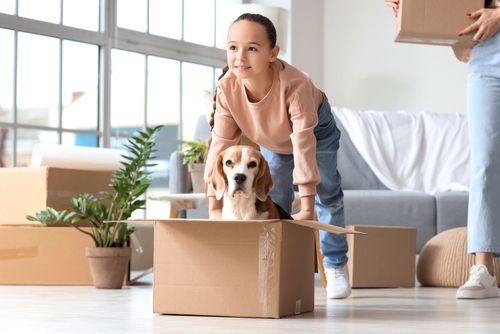Moving House with Pets: How to Keep Dogs and Cats Safe
Moving house with pets can be a stressful experience, not just for humans but also for our pets. Dogs and cats, in particular, can find the disruption to their routines and environment quite unsettling. In this blog post, we’ll explore how moving house affects dogs and cats, and how installing a dog fence can help keep your pets safe in their new environment. We’ll also provide tips for those who already have a dog fence and are wondering how to relocate it.
How Moving House Affects Dogs and Cats
Dogs:
Dogs are creatures of habit and thrive on routine. A move can disrupt their sense of security, leading to stress and anxiety. Signs that your dog is stressed include excessive barking, destructive behavior, and changes in eating or sleeping patterns.
Cats:
Cats are territorial animals and often find changes to their environment more distressing than dogs do. A move can cause a cat to become fearful, hide for long periods, or even try to escape. It’s important to make the transition as smooth as possible to help them feel secure in their new home.
The Importance of a Dog Fence in a New Environment
One of the biggest concerns when moving to a new house, especially if it’s near livestock or busy roads, is the safety of your pets. Installing a dog fence can provide a secure area for your pets to explore without the risk of them wandering off or getting into dangerous situations.
Benefits of a Dog Fence:
• Safety: Prevents pets from running into traffic or neighboring properties.
• Security: Keeps pets within a designated area, reducing the risk of them getting lost.
• Peace of Mind: Allows pet owners to relax, knowing their pets are safe.
For more information on the benefits and types of dog fences, check out DogFence.co.uk.
Moving Your Existing Dog Fence
If you already have a dog fence installed at your current home, the good news is that it can be moved to your new location. Here’s how to do it:
1. Plan Ahead: Before moving, measure your new yard to ensure your current dog fence will fit and provide adequate space for your pets.
2. Disassemble Carefully: Take apart the dog fence systematically, keeping all parts organized to make re installation easier.
3. Reinstall in the New Location: Follow the manufacturer’s instructions to reinstall the dog fence in your new yard, ensuring it is secure and functional.
Tips for Moving with Dogs and Cats
• Maintain Routine: Keep feeding and walking schedules consistent to help pets feel more secure.
• Create a Safe Space: Set up a quiet, comfortable area with familiar items like beds and toys for your pets to retreat to during the move.
• Gradual Introduction: Allow pets to explore their new home gradually, starting with one room at a time.
For more tips on moving with pets, you might find this article from the Cats Protection League helpful.
In conclusion, moving house can be a challenging time for dogs and cats, but with the right preparation and tools, such as a reliable dog fence, you can make the transition smoother and safer for your beloved pets. Don’t forget to explore DogFence.co.uk for more insights on keeping your pets secure in their new environment.
If you are concerned about your new property why not give us a call, we can look at remote image of your property and discuss options with you. Call us on 01628 476475 or email us info@dogfence.co.uk






